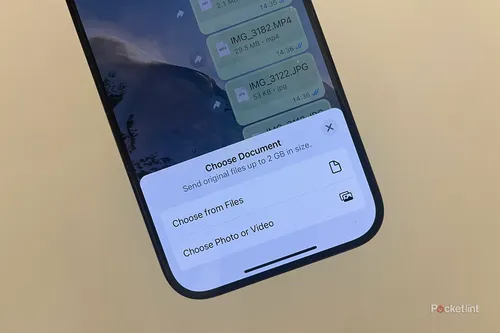
How to Secretly Use WhatsApp Web Without the Mobile App
As with all internet-connected things, millions of us rely on the availability of WhatsApp Web to “translate” our phone’s WhatsApp text messages onto our computers for typing and multitasking purposes. The basic prerequisite for access to WhatsApp Web via the Internet is that your smartphone needs to be connected to the Internet in order to relay those messages. But what happens if you want to use WhatsApp Web on a computer when your smartphone is offline, broken, or simply not compatible? There are lots of people who desire a truly independent experience from the web: the official paths and factors for accomplishing this.
Understanding the Official Link: WhatsApp Web and Your Phone
First let me explain what WhatsApp Web is all about. This is not an independent service at all, but actually a mirror or a terminal that puts the interface of your mobile application on a computer browser. And every message you send or receive on the web client is actually processed through your phone. That’s the point of its dependence; it’s the only way that your phone can get into any real secret Zap Web session, because of this architecture. Any time your phone loses power or doesn’t have an Internet connection, the WhatsApp Web session will be cut off, and then you can start over with the messages.
The Official Solution: WhatsApp’s Multi-Device Feature
Most likely, the nearest you’ll ever get to an official “secret” method is by making use of WhatsApp’s built-in multi-device feature. This is quite legit, and does add some extras to the standard WhatsApp Web experience—it means that instead of your smartphone acting like a simple relay, it lets up to four other devices (like computers, or a second phone) connect to your account separately. Once connected, they can simultaneously send and receive messages even if your primary phone is offline (and possibly without a battery! ).
This gets you started. Open WhatsApp Web from your computer, click the three dot button and click Link a device. On your phone go to WhatsApp > Linked Devices > Link a Device and scan the QR code at the bottom. Once the initial link has been made make sure the “Multi-device beta” box is checked. The trick here would be to not have any apps on your phone at all when using this method but to enable it at a later date for more detached use.
The Unofficial Path: Third-Party Applications and Emulators
This is where the idea of sneaking into some sort of secret Zap Web session becomes more plausible but also more dangerous. Some people have installed Android emulators like BlueStacks and/or NoxPlayer. These programs will create a virtual Android phone (on your Windows or Mac computer) so that you can install the official WhatsApp mobile app (within this virtual phone). You can also verify a phone number via an SMS (which you would then have to have access to) and run WhatsApp entirely on your PC. So this effectively creates a pretty Web-like version of WhatsApp that is restricted to your computer, though it does fulfill the criteria for “without the mobile app”, although it does use the mobile app inside an emulator.
Critical Considerations: Security and Privacy Risks
Before doing any unofficial way to establish a secret Zap Web portal, you must look into the hefty risks. Using third-party, modded APKs, or other unofficial web clients that promise a direct link between your WhatsApp Web and your phone is a huge safety hazard. These come from developers who are not affiliated with WhatsApp, and often violate its Terms of Service. So it can get you anywhere from a temporary ban to a permanent account suspension. More importantly, they could be designed to steal your information, messages, and account credentials. Your privacy would be violated to a point where you couldn’t even trust anything. Security over convenience should be your primary consideration when communicating with any recipient.
The Ethical and Legal Implications
The second most important thing about the title is the word “secretly. ” If you’re using WhatsApp Web on a device without consent of the account owner it’s a violation of privacy and a crime. The security model for WhatsApp is built around a single phone number which gets linked to only one account. If you’re able to gain access to someone else’s account, even through a hacking “Zap Web” trick, it’s a serious breach of trust and of law. This article is mostly about managing your own account across multiple devices more flexiblely, and not about monitoring others. Never compromise digital privacy.
Conclusion
Summary: There is no secret and officially sanctioned way to use WhatsApp Web without having any connection to a mobile app. If you use the multi-device feature, it’s the safest and most efficient way of reducing your dependence on your phone and getting yourself some degree of independence from Zap Web. There are technically-at-least technical ways to get similar independence, such as using an Android emulator, but both have their own issues of complexity and security vulnerabilities to overcome. The pursuit of such a secret WhatsApp Web session is ultimately a decision between convenience, security, and ethics. For most people, the official multi-device feature is the best bet—so that your messages will always be secure and you can have the flexibility you desire.






